Every region in Italy has its own traditions and typicality.
We go through them from north to south to discover the historical trades that most characterize them (click on the name of the region to know all our craftsmen in that area).
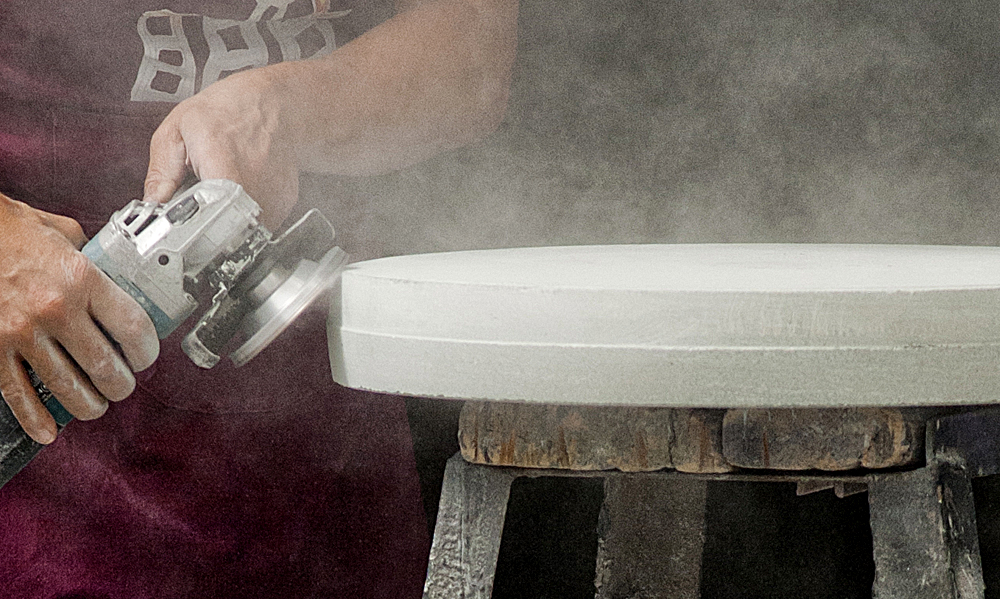
Typical of this mountain region, propped up by large expanses of woodland, are all the woodwork: traditional objects or accessories, such as the typical clogs, the grolla and its “derivative”, the cup of friendship, but also plates, spoons, rakes, butter forms, toys and frames. The weaving, in fact, in particular that based on hemp fibers, is another ancient tradition, as well as the processing of soapstone, a soft rock, gray-green, widespread especially in the lower Valle d’Aosta, with which are made sculptures and decorative objects, but also stoves, mortars, pestles, pots.
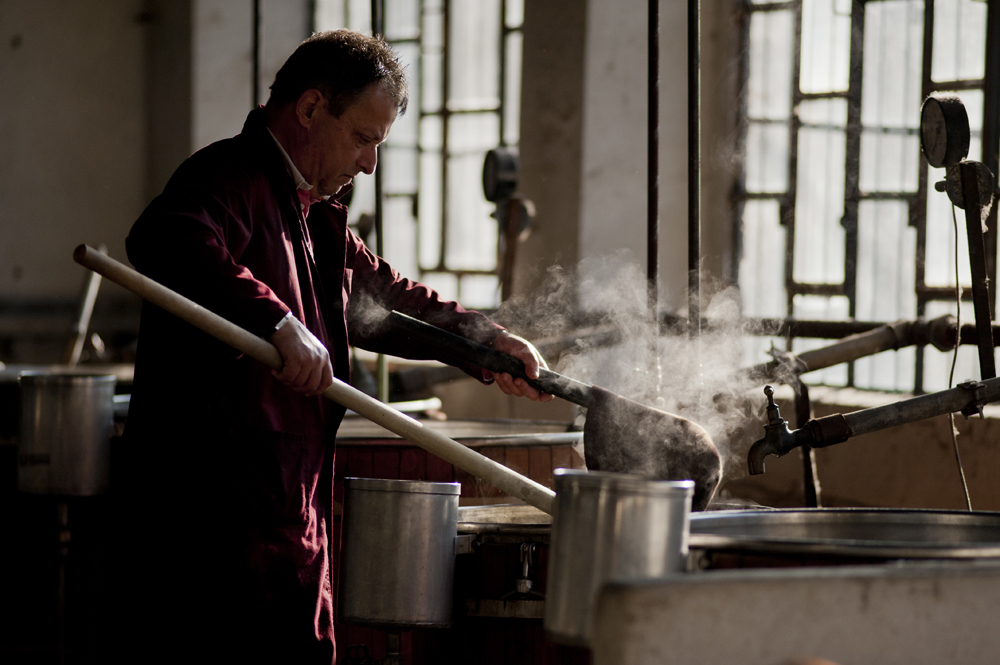
As far as metals are concerned, in the Maira Valley, an area rich in mines, iron working is one of the most important activities, while in the Canavese area copper working is still renowned and in the Germanasca Valley marble working thanks to the quarries located in Maiera. There are also historical wood, restoration and glass workshops (magnificent for example the majestic chandeliers of the Royal Palace in Turin), but also jewels, embroideries and tapestries. Known all over the world are the Borsalino hats of Alessandria, while the province of Cuneo is famous for the production of musical instruments such as organs and harps, Quarta for metal and wooden wind instruments and Leinì for accordions.
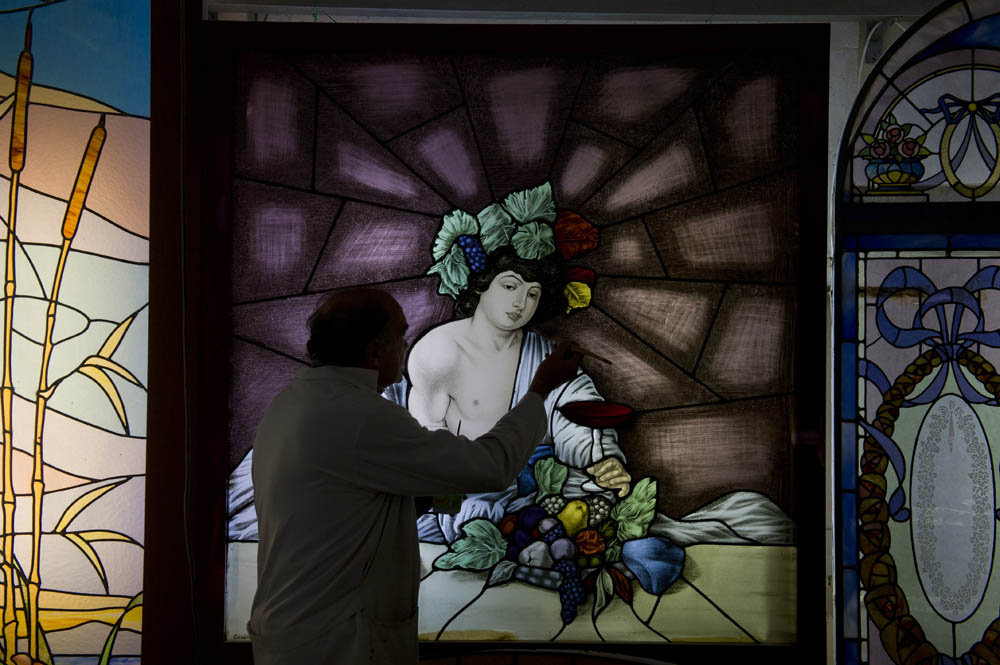
Textile art is undoubtedly one of the most renowned Lombard handicraft activities also at an international level, in particular for the processing of silk, of which the city of Como is certainly one. Hence its vocation to the world of tailoring, particularly in Milan, where there are also goldsmiths and silversmiths, artistic foundries, artistic glassworks and, of course, one of the most prestigious design workshops in Italy. There is also the ancient tradition of violin making in Cremona, such as that of Toscolano Maderno paper and the elegant pipes of Cantù, also known for its production of handcrafted furniture.
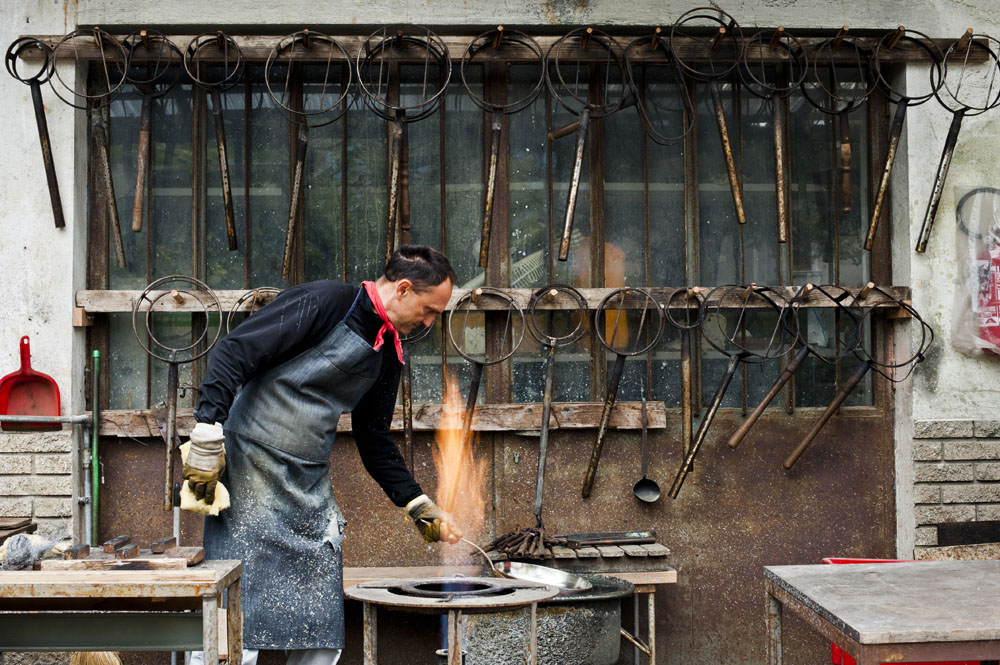
Returning to the mountains, wood once again becomes the first of the protagonists and with it the whole world of sculpture, but also the world of domestic utensils, furniture, cribs and toys, like the smiling dolls of Val Gardena. In these areas wrought iron and copper are worked a lot, but soapstone is still available and used, although here the most characteristic stoves are those in majolica. The bobbin lace and loden, or sheep’s wool, are still made today.
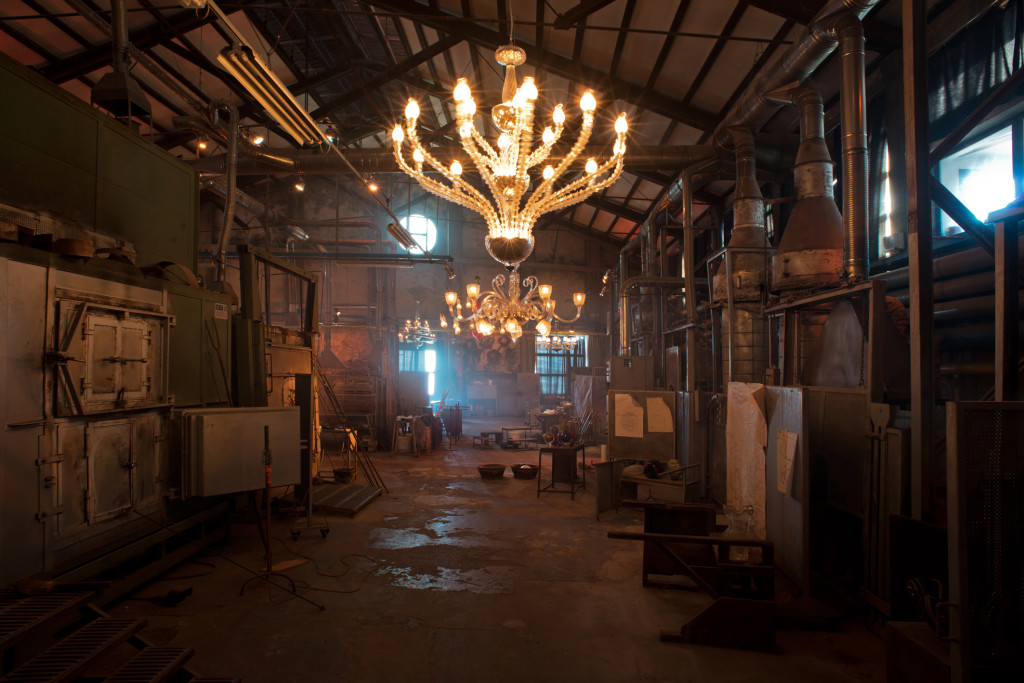
Here the first obligatory mentions are the Murano glass, Burano lace, masks and costumes, the goldsmiths, with their Moretti, and the magnificent Venetian fabrics. But also the porcelains of Bassano del Grappa, the Venetian bookbinding and mirrors, the leather working typical of Vicenza, the decorative art and restoration of Padua and the wickerwork worked in the province of Belluno.

Also in Friuli Venezia Giulia, of course, there is no lack of craftsmanship in stone, wrought iron and wood, with which, for example, Dalminis, typical Friulian shoes, are made. Perhaps not everyone knows Spilimbergo, in the province of Pordenone, known as the city of mosaics. Without forgetting the textile tradition testified also by the beautiful costumes typical of Carnia made of velvet and cotton and by the shoes, slippers made of canvas and usually embroidered with floral decorations.
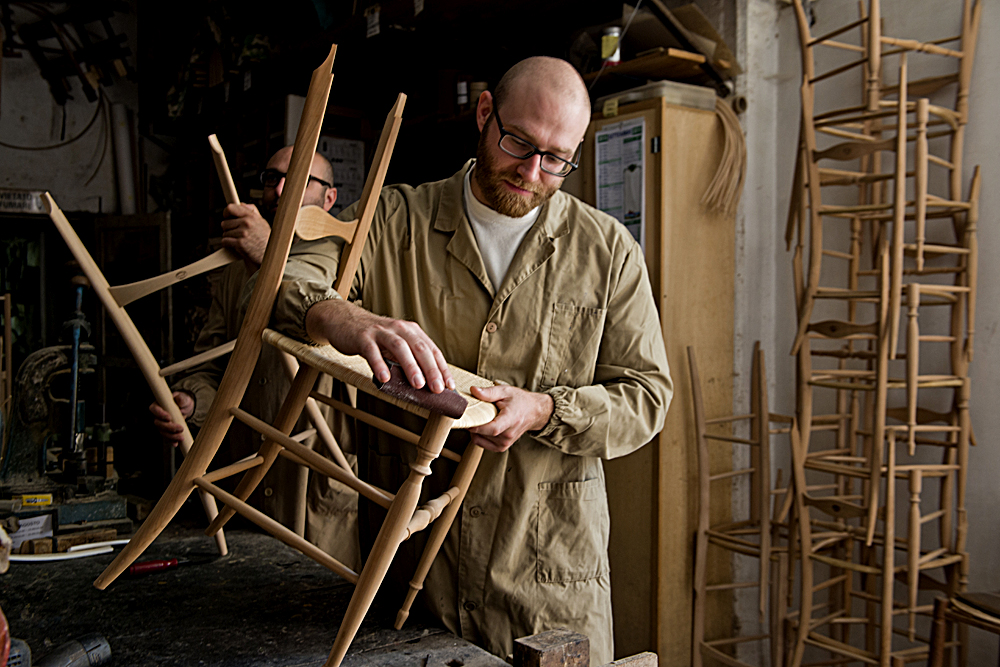
Among the many typical productions of Ligurian craftsmanship famous for centuries are the damask of Lorsica and the velvet of Zoagli, both in the province of Genoa, as well as the processing of macramé. Also the working of glass and the decoration of stained glass is linked since the Middle Ages to the locality of Altare, in the province of Savona, as well as the production of ceramics and majolica, in particular in Albissola, while the production of shoes and leather accessories represents the classicism and elegance of the Genoese style. Finally, Chiavari’s chairs are essential and of incredible workmanship.
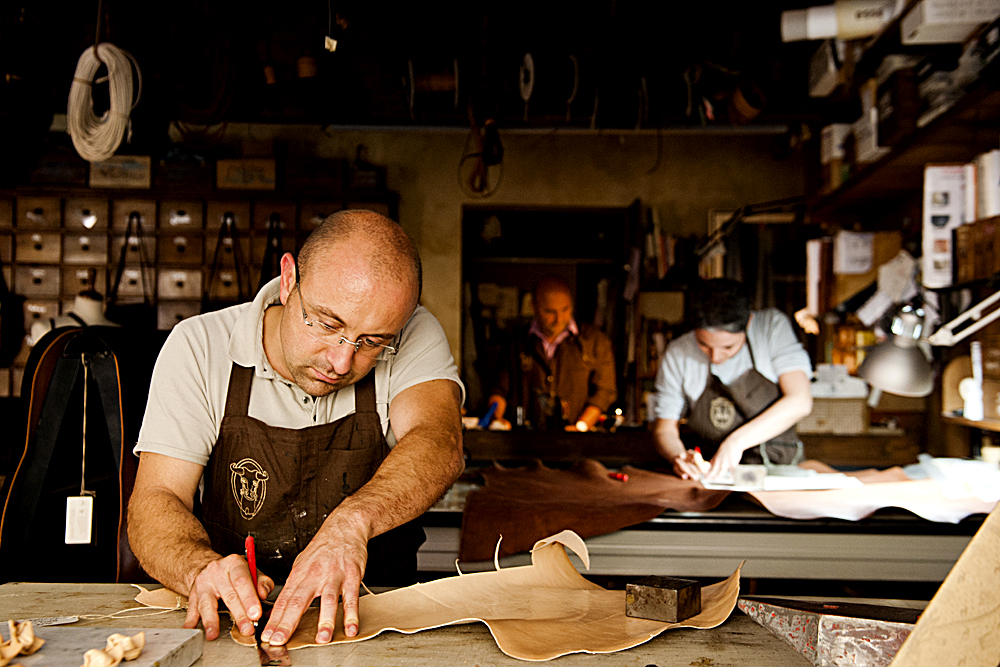
The ceramics of Faenza and the mosaics, of course Byzantine style, of Ravenna are among the flagships of Emilia Romagna. The processing of leather in Modena is also ancient, where there are also goldsmiths’ workshops of great thickness. Very strong also the tradition of wrought iron and that of hand printing of iron rust canvas fabrics typical of the territory of the province of Forlì.
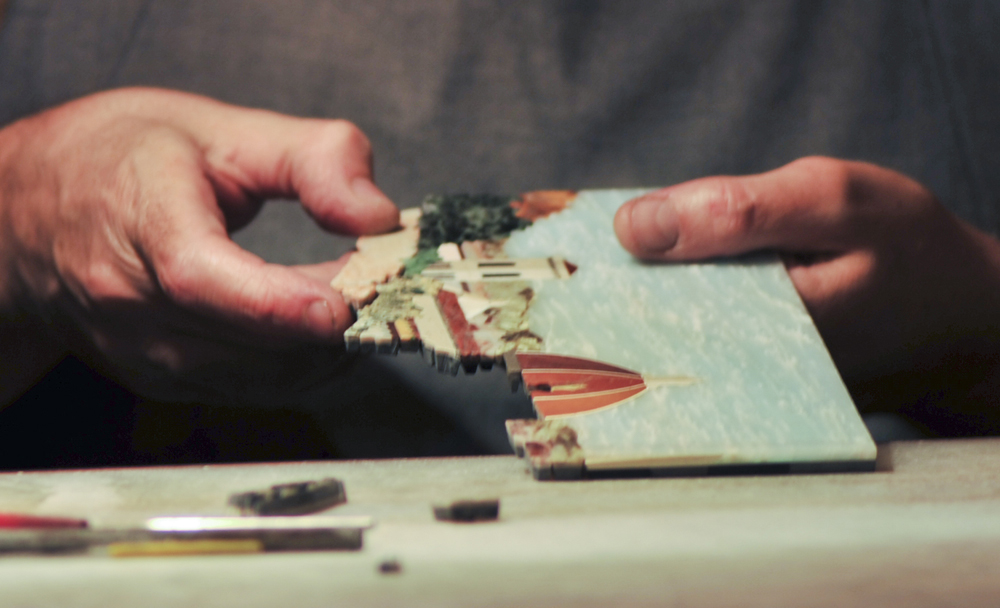
The terracotta of Impruneta, the ceramics of Montelupo, the glass of nearby Empoli, the Carrara marble, the alabaster of Volterra, the colorful Casentino cloth and the Florentine marbled paper are just some of the oldest Tuscan traditions. Still looking to the capital, there are many other crafts that have a long history here: the working of leather and with it the creation of custom-made shoes, the art of creating very fine jewelry (to confirm this, just take a visit to the inevitable Ponte Vecchio), but also silver objects, bronze work, the art of silk and fabric in general, the refined tailors, the Florentine clerk, the scagliola and the mosaics, the famous straw hats and the gilded frames, not to mention the fact that it was from here that the perfumery art as we understand it today began, namely Catherine de’ Medici, who took her master perfumer with her when she went to France to marry King Henry II of Valois.
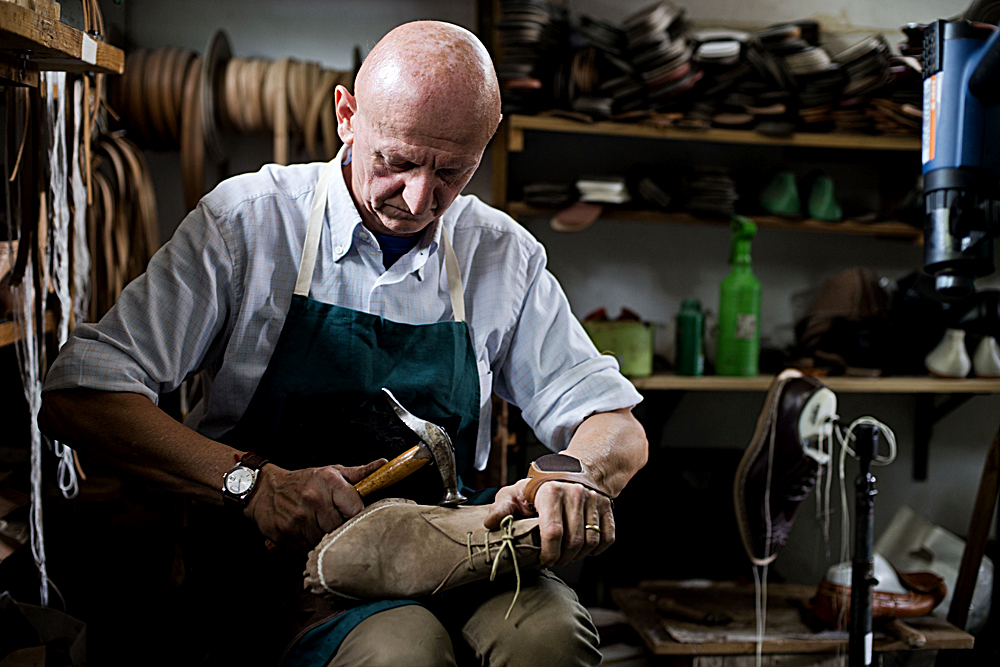
Great master shoemakers come from Civitanova Marche and Montegranaro, while leather and leather processing is typical of the Tolentino area. Ascoli Piceno is renowned for its ceramics, while the terracottas are typical of Fratterosa. Wrought iron is worked in particular in Treia and Cagli and copper. We cannot forget the paper of Fabriano. But also the lace and fabrics made with bobbin or bobbin lace, the hats of Montappone and Massa Fermana and the accordions of Castelfidardo.
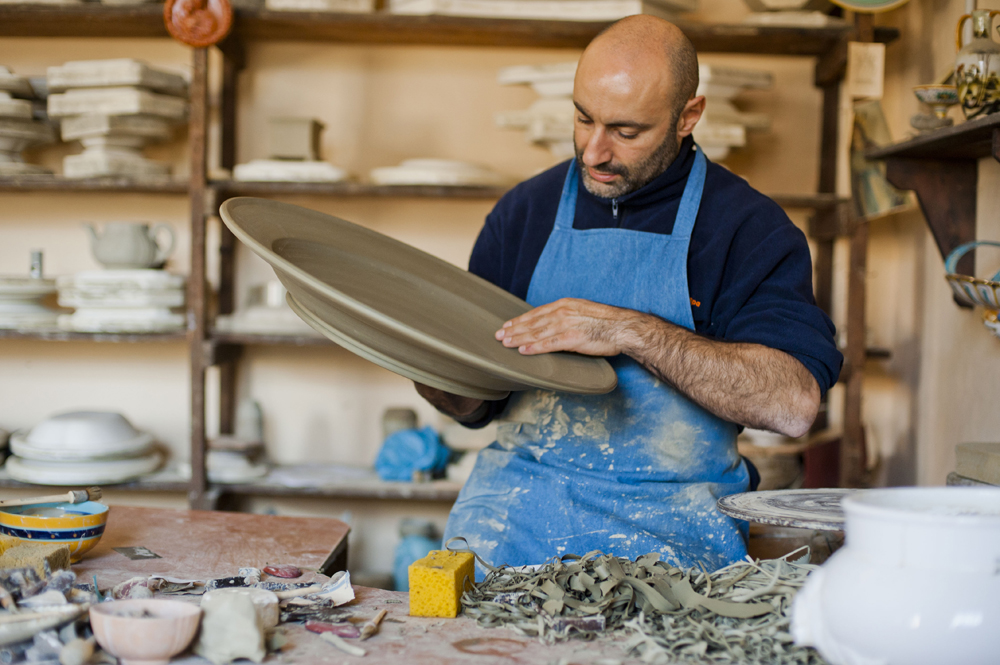
Of ancient tradition are the ceramics of Deruta and Orvieto, as well as woodworking, then particularly suited to the production of furniture and fixtures, the main activity of Città di Castello. There are also workshops specialized in restoration, inlaying, carving and the production of musical instruments: harps, lutes, vielle, sinphonie in Assisi and master organists in Foligno. Finally, already in the fourteenth century great was the fame of the tablecloths perugine and the forgeers of Montone.

The goldsmith’s art, with a refined Byzantine influence, has had great splendour in Rome since ancient times. Tailoring and made-to-measure shoes are other prides of the Capital. Leaving Rome, in Civita Castellana, Tivoli and Bomarzo, you can meet the masters of embossed copper, the stuffed chairs are still handmade in Cori, near Latina, while in Subiaco the fabrics are still handmade and in Arpino the terracottas and the statuettes of the crib are produced. The embroideries of Palestrina are so precious that they are known all over the world, together with the ceramics of the Etruscan area of Viterbo.
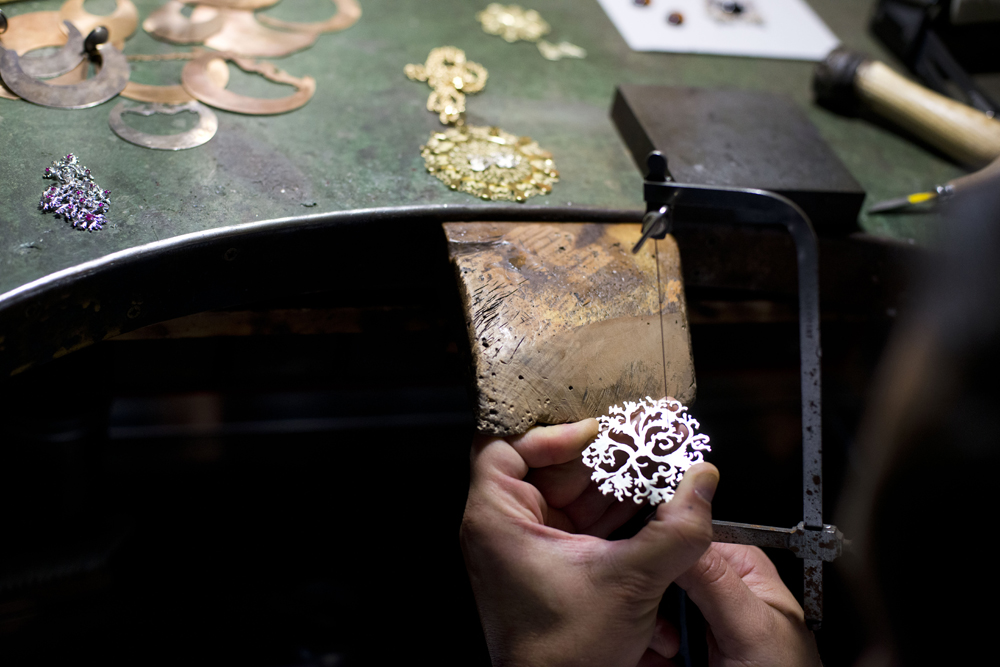
Castelli is one of the main creative poles of ceramics in Italy. The goldsmithing is another important tradition, whose peak was between the thirteenth and sixteenth centuries when it became known in particular for the creation of liturgical objects. Also typical is the production of rural musical instruments such as bagpipes and bagpipes.

Among the most characteristic artisan products of Molise there is the bronze working and the production of bells typical of Agnone, today mostly linked to the name of the Pontifical Foundry Marinelli. Remaining on the theme of metals, equally ancient is the tradition of cutlery in Frosolone. Without forgetting the bobbin lace and the very refined lace of Isernia.

That of Campania could be another very long chapter. Region rich in traditions and excellence of craftsmanship, above all should be mentioned: the Neapolitan tailoring and cribs, porcelain and ceramics of Capodimonte, the processing of paper in Amalfi, the axe masters of Ischia and the art of creating magnificent coral jewelry typical of Torre del Greco.
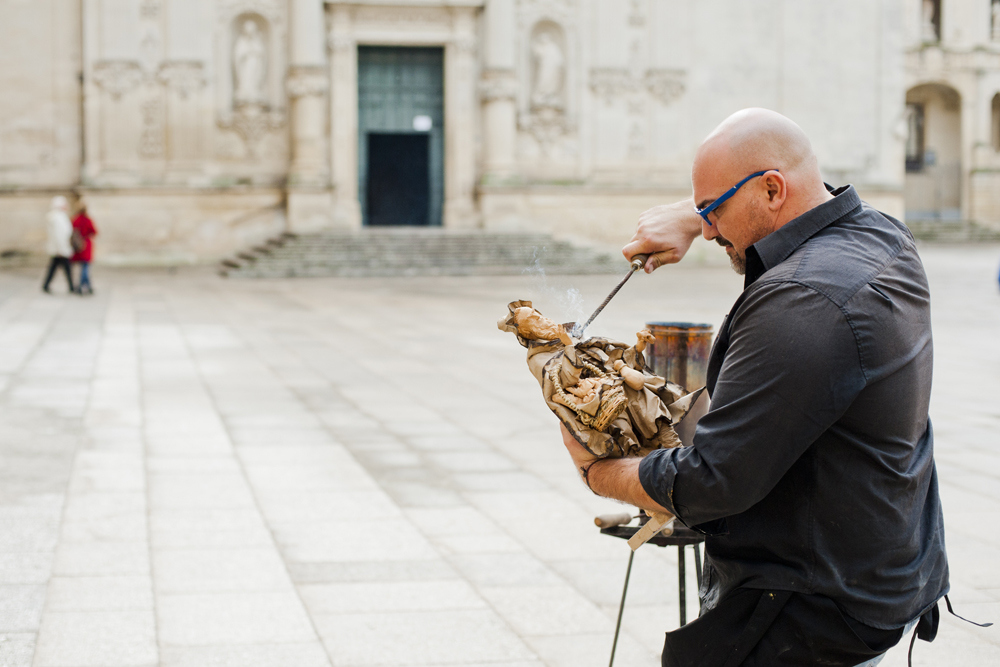
Let’s start from Lecce, where not to be missed are the beautiful creations in the white and sinuous Lecce stone, together with the colorful papier-mâché sculptures and masks. Then there are the famous ceramics of Grottaglie, with its pumo, a typical lucky charm, and the cucco, a jug used to pour water, and the tradition of wicker baskets.
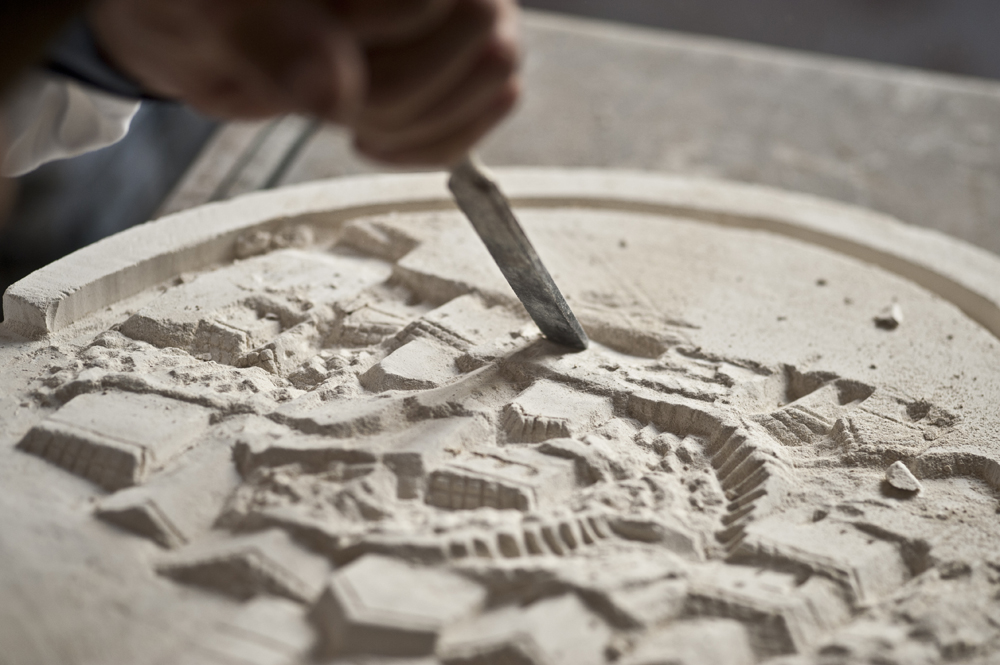
Since ancient pre-Roman times, thanks to the presence of thick forests and woods, woodworking was already widespread. Lots of objects or furniture made in the course of history by carving wood, as shown by the wooden choirs in churches, doors, stools, but also objects of daily use such as spoons, ladles, milk bowls, barrels and flasks. Among the many curiosities there are also the wooden stamps that once served to mark their bread loaves as they were baked in the common oven. One of the many traditions widespread in the beautiful Matera, where the art of stone working with which its incredible historical center was built, the tuff, a sandstone rock very similar visually to the Lecce stone, could not miss. Equally typical are the terracotta cribs and papier-mâché objects, the knotted carpets of Avigliano and the kilim carpets of Savoy, while in Spinoso, Francavilla in Sinni and Abriola the characteristic stuffed chairs are produced.
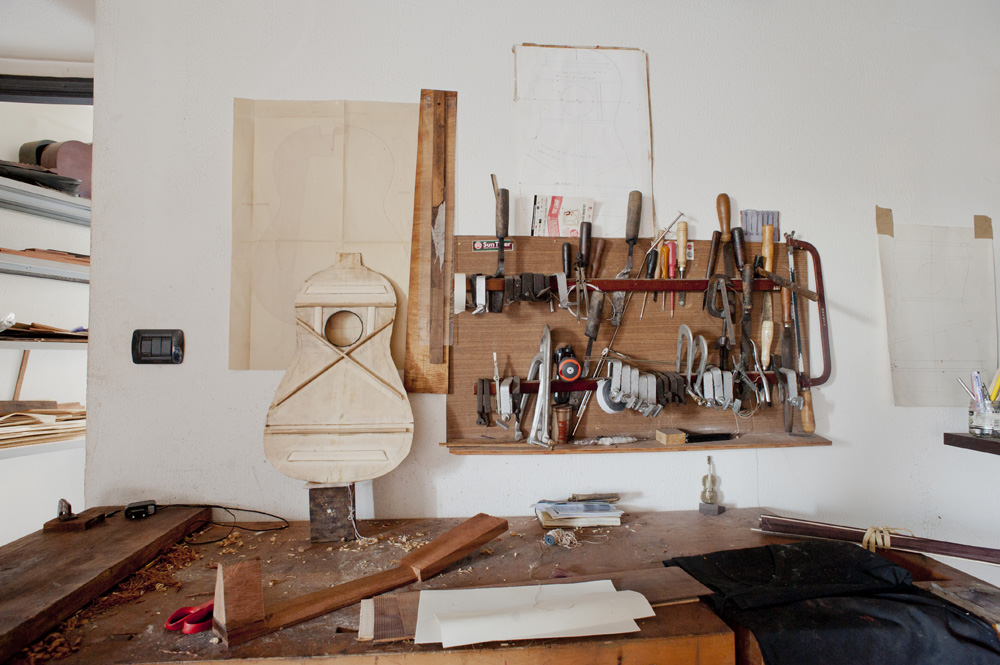
Even in Calabria still lives the tradition of hand stuffed chairs, together with those of terracotta pitchers and jars, and the characteristic handmade pipes made of walnut wood and the plant called “ciocco”, which have become real collectors’ items all over the world. One of the most ancient arts is then that of weaving with the production of tapestries, silks, damasks, bobbin lace and embroidery of all kinds. In Serra San Bruno is very widespread the working of wrought iron and copper, while Crotone is one of the most famous cities for the working of silver and gold. Famous are also the guitars, among whose main centers of construction there is Bisignano.

Sicily is one of the Italian regions with a greater variety of typical handicraft production. Famous are the ceramics of Caltagirone, as well as the coral masters of Trapani, while in the areas near Etna, particularly in Giarre, is still widespread the working of lava stone. We should also mention the puppets, the traditional puppets spread in particular in Palermo and Catania since the mid-nineteenth century. Speaking of fabrics, typical is the frazzata of Erice, a technique with which rugs with brightly colored hand woven and decorated with recycled fabrics are still made today, while the parade is a type of Sicilian embroidery characteristic of the towns of Castiglione, Sortino and Vittoria.
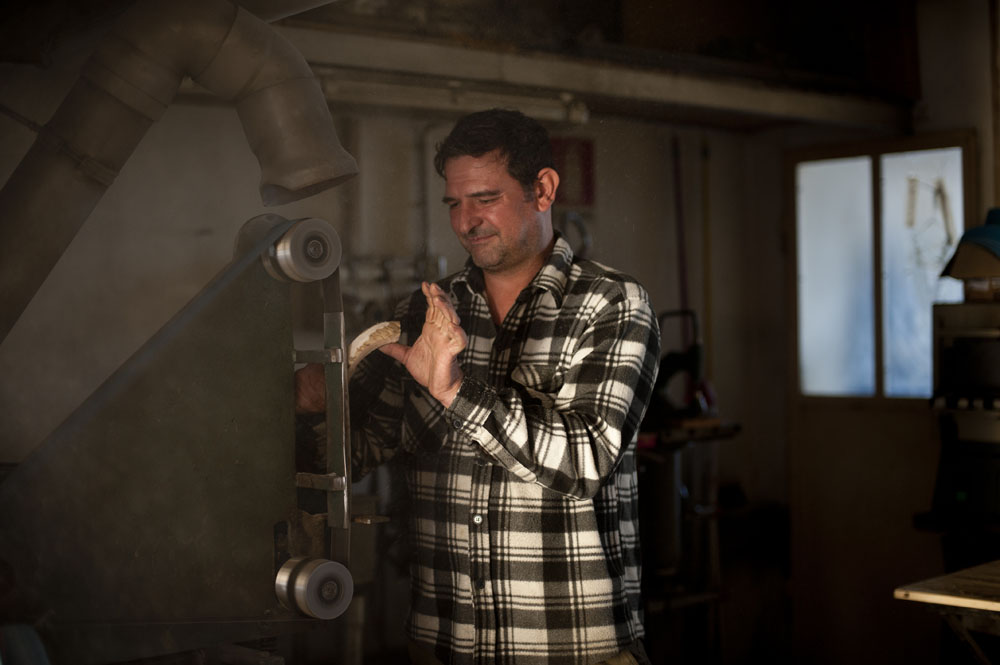
Even Sardinia is no less. But if we want to make a top ten of the typical products not to be missed, surely must be included: the knives of Pattada, the carpets of Aggius, but also of Nule, the hand woven baskets of Castelsardo, the filigree and red coral jewelry of Alghero, the wooden masks of Mamoiada, home of the Mamuthones and Issohadores, the ceramics of Assemini, the processing of leather and leather in particular in the provinces of Sassari, Cagliari, Oristano and Dorgali and cork clothing in Tempio Pausania.